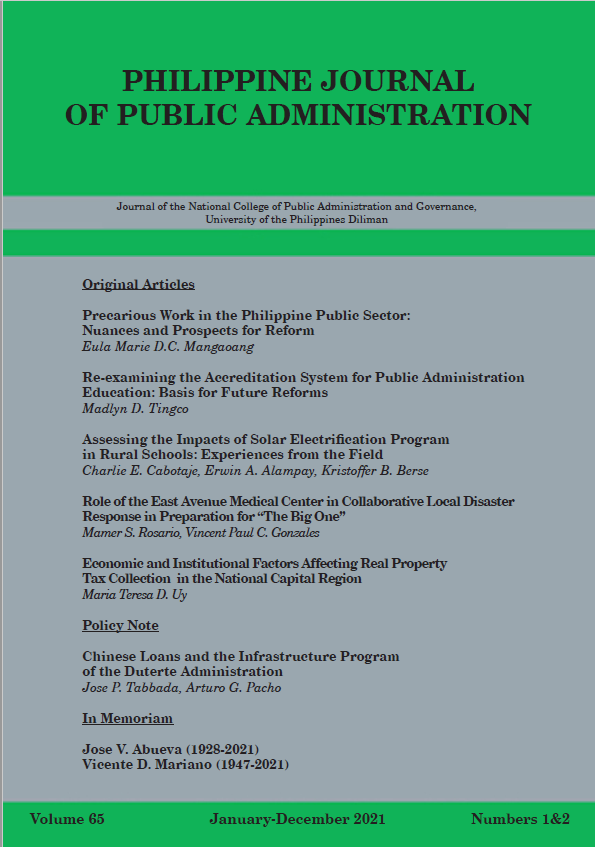Role of the East Avenue Medical Center in collaborative local disaster response in preparation for “The Big One”
Abstract
This article explores the response capacity of the East Avenue Medical Center (EAMC), in relation to the possibility of a major earthquake happening in Metro Manila, and in light of the current health governance situation in the Philippines. It employs a review of literature to analyze the present health and DRRM governance system, to draw a profile of the EAMC, and to explore possible solutions that can help improve trauma care delivery in the event of a major earthquake in Metro Manila. A cursory survey is also administered to 80 health professionals working in the EAMC to ascertain their perceived disaster preparedness and role in the DRRM in the said healthcare facility. Literature review reveals that, despite the existence of pertinent laws and policies on DRRM and universal health care, certain provisions in policy, such as multilevel, multi-agency coordination in DRRM and out-of-pocket financing for funding health care, may hamper the delivery of prompt disaster response and emergency trauma care. In terms of perceived disaster preparedness and role in the DRRM, health workers in the EAMC are at least aware of the DRRM protocols in health. However, the results also indicate the need for disaster management protocols to be operationalized through active engagement among health workers in the EAMC and other agencies working in DRRM.
Keywords: disaster risk reduction and management; health care delivery; emergency response policy



